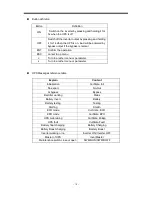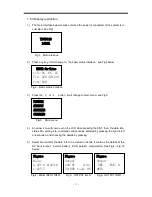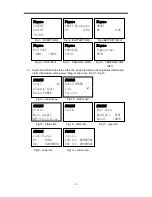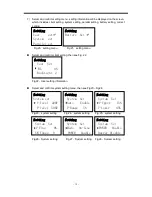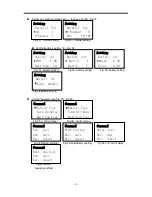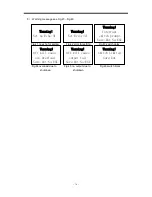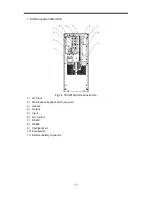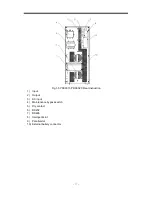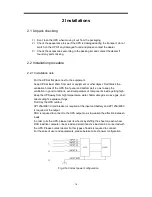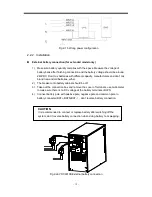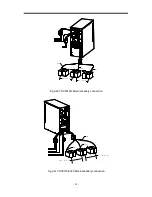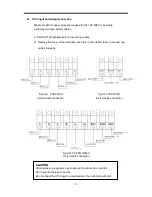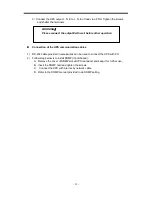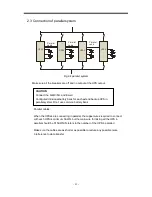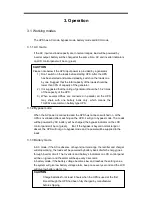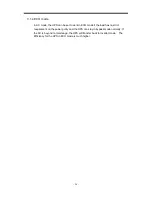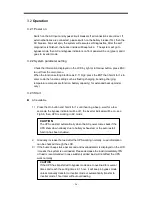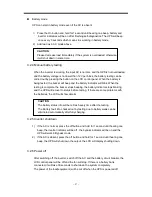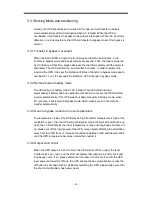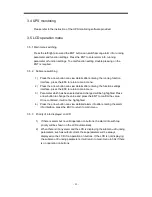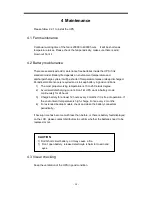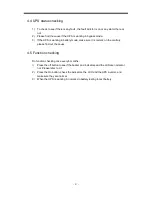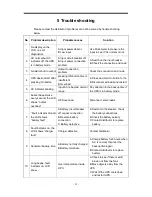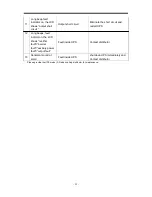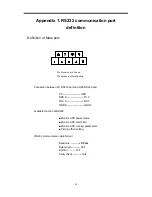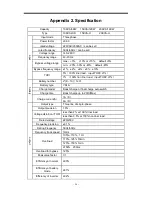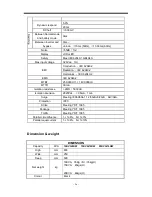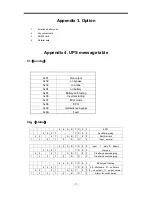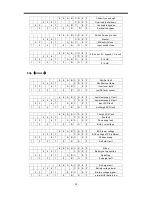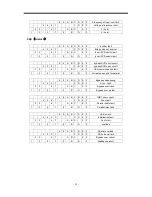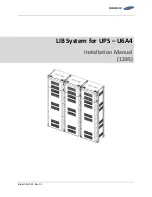
- 24 -
Charge batteries for at least 8 hours when the UPS is used at the first
time although the UPS had been fully charged by manufacturer
before shipping.
3. Operation
3.1 Working modes
The UPS has AC mode, bypass mode, battery mode and ECO mode
3.1.1 AC mode
If the AC input and load capacity are in normal ranges, load will be powered by
inverter output, battery will be charged at the same time. AC and inverter indicators
on LCD control panel will be on (green).
3.1.2 Bypass mode
When the AC power is connected and the UPS has not been switched on, or the
UPS is overloaded after switching on the UPS, it will go to bypass mode. The Loads
will be powered by AC, battery will be charged, the bypass indicator on the LCD
control panel will be on (green). But, if the bypass is beyond normal range or
absent, the UPS will not go to bypass mode and no power will be supplied to the
loads.
3.1.3 Battery mode
In AC mode, if the AC is absence or beyond normal range, the rectifier and charger
will stop working, the loads will be powered by battery bank of which energy goes
through inverter circuit. The Inverter’s and battery’s indicators on LCD control panel
will be on (green) and the alarm will beep every 3 seconds.
In battery mode, if the battery voltage becomes low and reaches the setting value,
the system will give low battery voltage alarm, beep once every second and the LCD
will give low battery alarm, too.
CAUTION
CAUTION
Please note below if the UPS input power is provided by a generator
1) Don't switch on the loads before starting UPS. After the UPS
has been started and worked steadily, switch on the loads one
by one. Suggest that the total capacity of the loads should be
lower than 30% of capacity of the generator
2) It is suggested that the rating of generator should be 1.5-2 times
of the capacity of the UPS.
3) When several UPSes are connected in parallel, all the UPS
may share with one battery bank only, which means the
10-20Kva are common battery type UPS.

